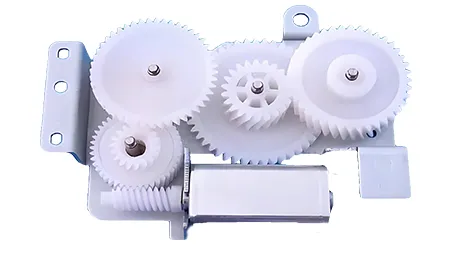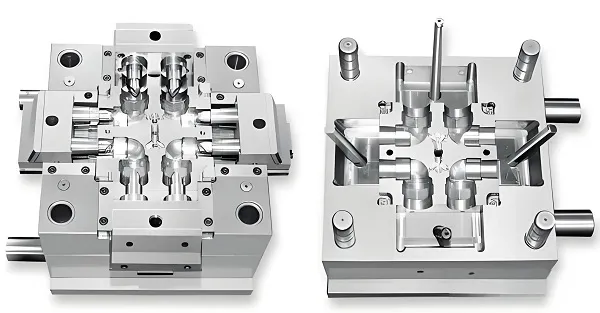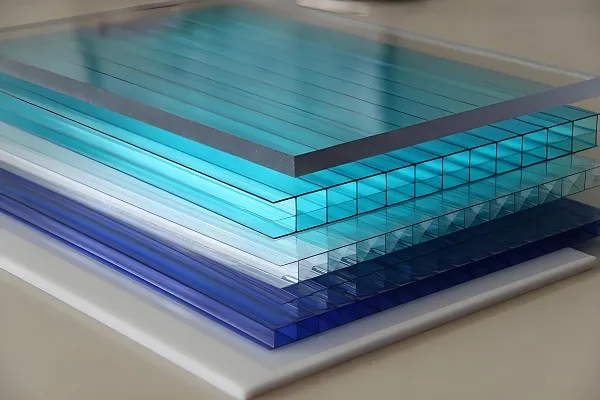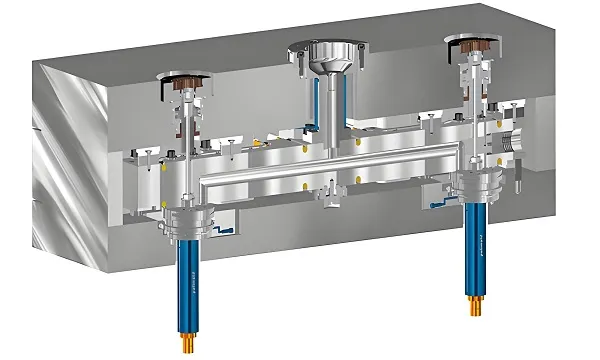Custom cooling tower spray nozzles are precision-engineered components designed to distribute water evenly over heat exchange surfaces. These specialized devices optimize heat dissipation by converting water flow into fine, uniform sprays, with customizable designs to match specific tower configurations and cooling requirements. Essential for industrial, HVAC, and power generation systems, they enhance cooling efficiency while reducing energy consumption.
Applications, Common Sizes & Product Features
Typical Applications
Widely used in industrial cooling towers, HVAC cooling systems, power plant condenser cooling, chemical processing cooling units, and data center cooling facilities. They’re critical for applications requiring efficient heat transfer between water and air streams.
Common Specifications
- Nominal Diameter (DN): 15mm, 20mm, 25mm, 32mm, 40mm, 50mm, 65mm, 80mm, 100mm
- Flow Rate Range: 0.5-50 m³/h (depending on size and pressure)
- Spray Angle: 30°, 45°, 60°, 90°, 120° (adjustable via design)
- Operating Pressure: 0.05-0.3MPa (optimized for energy efficiency)
- Connection Types: Threaded (BSP/NPT), flange, quick-connect
Key Product Features
- Uniform Spray Distribution: Achieves ≥95% coverage uniformity across target surfaces to prevent hot spots.
- Anti-Clogging Design: Specialized inlet structures and flow paths reduce debris accumulation, with self-cleaning capabilities for 90% of particulate matter ≥0.5mm.
- Low Pressure Loss: Optimized internal flow design minimizes pressure drop (≤0.05MPa at rated flow).
- High Heat Transfer Efficiency: Generates ideal droplet sizes (0.5-3mm) for maximum surface contact with air.
- Durable Construction: Resists scaling, corrosion, and UV degradation for 8-12 year service life in standard conditions.
Alternative Processable Materials & Their Features
- PVC (Polyvinyl Chloride): Cost-effective option for ambient temperature (≤45°C) cooling systems with non-corrosive water. Features good chemical resistance and lightweight properties (density 1.3-1.4 g/cm³).
- PP (Polypropylene): Withstands higher temperatures (up to 80°C) and offers better impact resistance than PVC. Ideal for moderately corrosive environments like light industrial applications.
- ABS (Acrylonitrile Butadiene Styrene): Combines strength and toughness with smooth flow paths, suitable for variable flow systems requiring precise spray patterns. Operating temp: -40°C to 80°C.
- 316 Stainless Steel: Excellent corrosion resistance for high-temperature (up to 150°C) and aggressive media (chemical-laden water). Features high tensile strength (≥580MPa) for high-pressure systems.
- Brass: Good thermal conductivity and machinability, perfect for medium-pressure systems (0.2-0.5MPa) with potable or mild industrial water.
Manufacturing Process
- Design & Simulation: Create 3D models using CAD software, validated with CFD (Computational Fluid Dynamics) simulations to optimize spray patterns.
- Material Preparation: Select raw materials based on application requirements; pre-treat plastics to remove moisture (critical for injection molding quality).
- Precision Molding/Manufacturing:
-
- Metals: CNC machining or investment casting for complex geometries
- Surface Treatment: Apply anti-scaling coatings (for plastic nozzles) or passivation (for metal variants) to enhance durability.
- Testing & Calibration: Conduct flow rate testing (±2% accuracy), spray pattern analysis using laser imaging, and pressure drop verification before packaging.
Manufacturing Challenges
- Spray Uniformity Control: Ensuring consistent droplet size and distribution across the entire spray angle requires precise control of internal geometry—even 0.1mm variation in nozzle orifice can cause 10% flow deviation.
- Anti-Clogging Optimization: Balancing large enough inlet passages with fine spray requirements demands sophisticated flow path design validated through 100+ prototype tests.
- Material Durability: Achieving long-term performance in cyclic temperature conditions (-10°C to 60°C for plastics) requires specialized material blends and UV stabilizer additions (2-3% by weight).
- High-Pressure Performance: For 0.3MPa+ applications, preventing material deformation during operation necessitates structural reinforcement without compromising flow dynamics.
Customization Process
- Requirement Assessment: Customers provide parameters (cooling load, water quality, tower dimensions, operating pressure/temp) via our technical questionnaire.
- Engineering Design: Our team develops custom 3D models and conducts CFD simulations within 5 working days to verify performance.
- Prototype Production: Manufacture 2-5 prototypes using rapid prototyping (3D printing for plastics, CNC for metals) with 7-10 day delivery.
- Performance Testing: Evaluate prototypes in our testing facility, measuring spray coverage, flow rate, and pressure drop; adjust designs based on results.
- Mass Production: Upon approval, initiate bulk manufacturing with 2-3 week lead time, including full quality inspection of each unit.
Frequently Asked Questions
- Q: Why is my cooling tower efficiency decreasing despite regular maintenance?
A: Likely due to nozzle wear causing uneven spray distribution. Check for 10%+ flow rate reduction or visible spray pattern distortion—common after 8-10 years of service.
- Q: How do I choose between plastic and metal nozzles?
A: Plastic (PVC/PP) works for ≤80°C, non-corrosive water, and lower costs. Metal (316 stainless) is better for >80°C, chemical exposure, or high-pressure (>0.3MPa) applications.
- Q: How often should nozzles be inspected/replaced?
A: Visual inspection quarterly; comprehensive testing annually. Replace when flow rate decreases by >10% or spray pattern becomes irregular.
- Q: Can nozzles be customized for high-sediment water sources?
A: Yes—we offer specialized anti-clog designs with enlarged inlets and self-cleaning features, proven to reduce maintenance frequency by 60% in sediment-rich environments.
Cooling efficiency starts with precision spray—choose Goldcattle custom cooling tower nozzles. With 15+ years engineering heat exchange solutions, we tailor nozzles to your exact cooling requirements, from 0.5 to 50 m³/h flow rates and 30° to 120° spray angles. Our CFD-optimized designs deliver 95%+ spray uniformity, reducing energy costs by up to 15%. Whether for industrial towers, HVAC systems, or power plants, we offer durable materials (PVC to 316 stainless) and 7-day rapid prototyping. Backed by 24/7 technical support and rigorous testing, Goldcattle ensures your cooling system performs at peak efficiency. Visit https://www.xmgoldcattle.com/ to design your custom nozzle solution today!







